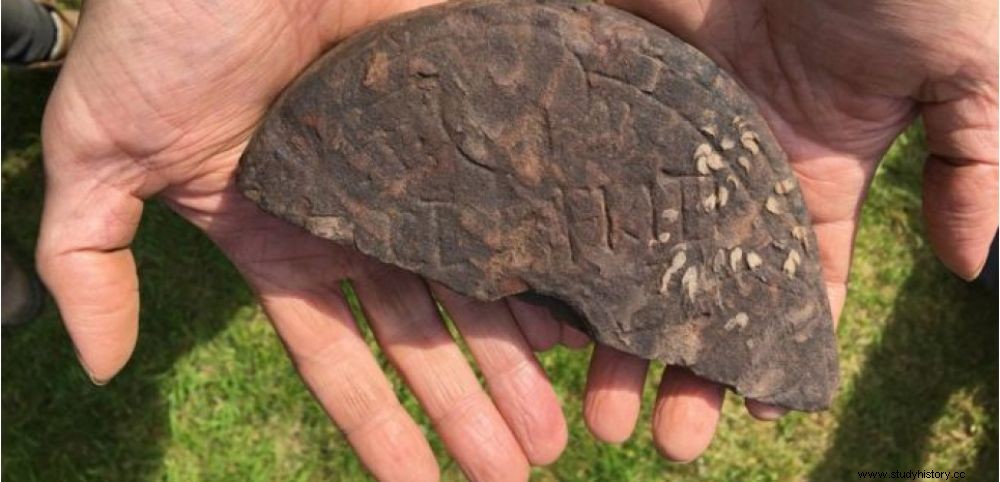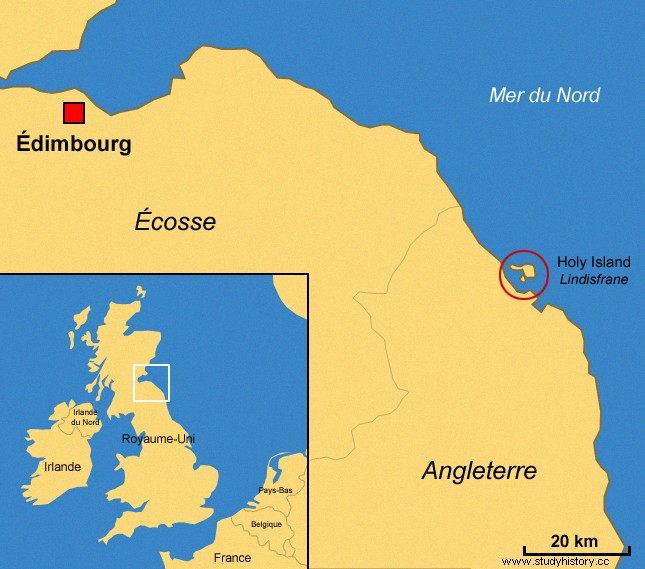 This engraved tombstone discovered on the island of Lindisfarne, in England, would attest to the presence of a monastery legendary.
This engraved tombstone discovered on the island of Lindisfarne, in England, would attest to the presence of a monastery legendary.
VIKINGS. The name of Lindisfarne Monastery, founded by the Anglo-Saxon King Oswald of Northumbria in 635 AD. has long radiated throughout Christendom...yet the original location of the building remains a mystery! In particular because of its sacking by the Vikings from 739 AD. The monastery was rebuilt a few centuries later on Holy Island (see location map below ), but the original site could never be discovered. After years of fruitless explorations, the find of an amateur archaeologist today puts specialists on a serious track. The anonymous volunteer is one of the sixty diggers of the associative project Dig venture, which raised crowdfunding of 25,000 pounds last February to help Professor David Petts of the University of Durham to precisely locate the original site occupied by Scottish monks. The researcher was thus able to conduct new geophysical studies, detecting interesting underground "clues" which led to the opening of new trenches, not far from an old priory built in medieval times. 
The building where the Lindisfarne Gospels were written
The discovery consists of a stone cut in a semi-circle, engraved with an Anglo-Saxon text, and dated to the 7 th century AD. This tombstone would be the first physical evidence of the existence of the original building where the Lindisfarne Gospels were written, an illuminated Latin manuscript now held by the British Library in London. Human bone fragments were found nearby suggesting the presence of a cemetery.
The Lindisfrane stone from every angle. © DigVentures on Sketchfab
"The presence of the stone among the rubble structures and human burials strongly suggests that we have found part of the monastic complex we were looking for", explains David Pett. The sculpted stone presents a part of a cross and an inscription still being deciphered. A name ends with the letters "FRITH", a very common element of Anglo-Saxon names. Researchers and volunteers say they are happy to approach the discovery of this lost place, which constituted the political and religious heart of the ancient kingdom of Northumbria. At the time when Dagobert reigned over the kingdom of the Franks, this very first monastery built beyond the English Channel was the basis for the Christianization of England.
